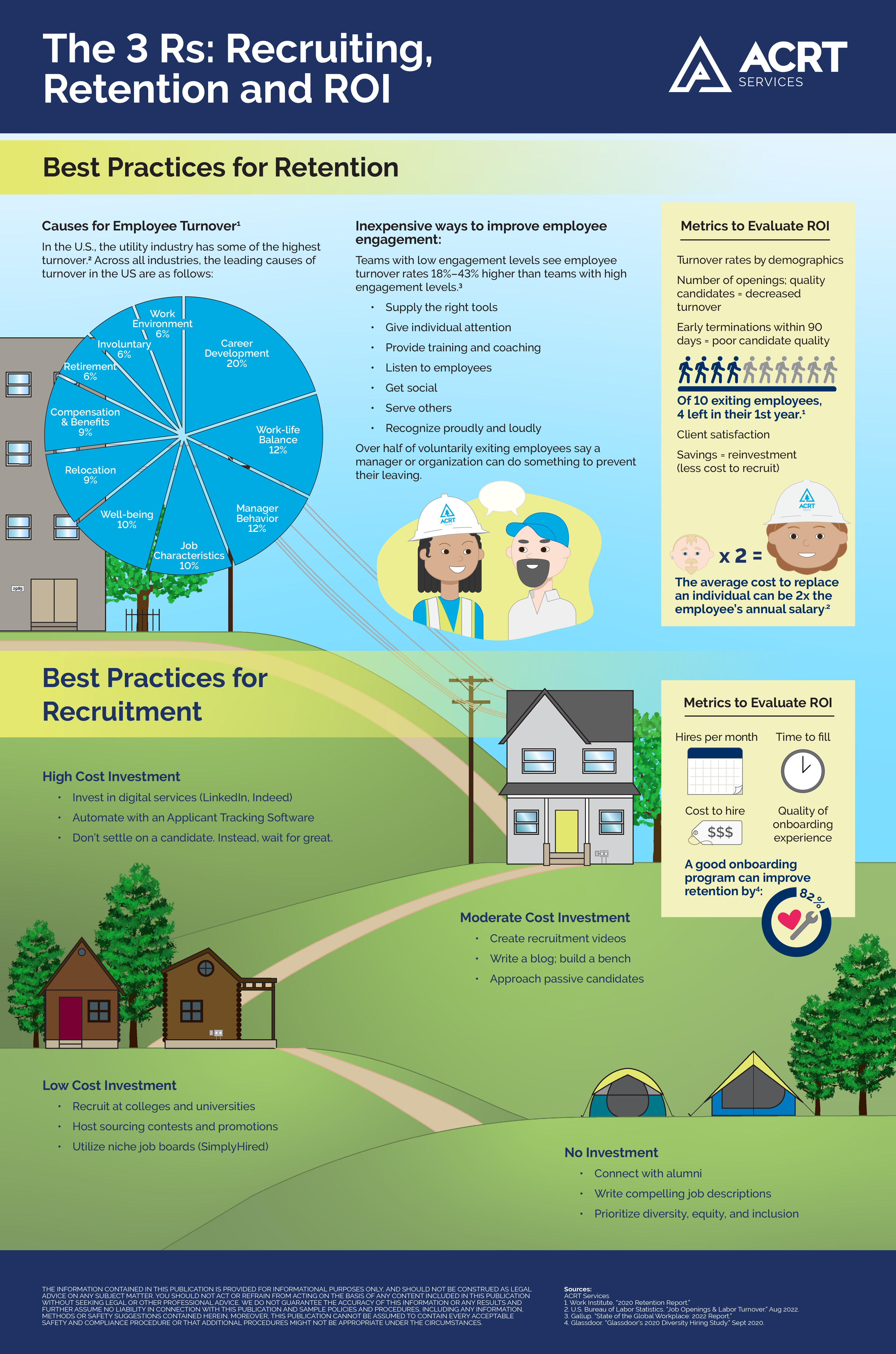Best Practices for Retention
Causes for Employee Turnover
In the U.S., the utility industry has some of the highest turnover. Across all industries, the leading causes of turnover in the US are as follows:
- Career development (20%)
- Work-life balance (12%)
- Manager behavior (12%)
- Job characteristics (10%)
- Well-being (10%)
- Relocation (9%)
- Compensation and benefits (9%)
- Retirement (6%)
- Involuntary (6%)
- Work environment (6%)
Inexpensive ways to improve employee engagement:
Teams with low engagement levels see employee turnover rates 18%-43% higher than teams with high engagement levels.
- Supply the right tools
- Give individual attention
- Provide training and coaching
- Listen to employees
- Get social
- Serve others
- Recognize proudly and loudly
Over half of voluntarily exiting employees say a manager or organization can do something to prevent their leaving.
Metrics to Evaluate ROI
- Turnover rates by demographics
- Number of openings; quality candidates = decreased turnover
- Early terminations within 90 days = poor candidate quality
- Of 10 exiting employees, four left in their first year
- Client satisfaction
- Savings = reinvestment (less cost to recruit)
- The average cost to replace an individual can be 2x the employee’s annual salary
Best Practices for Recruitment
High-Cost Investment
- Invest in digital services (LinkedIn, Indeed).
- Automate with applicant tracking software.
- Don’t settle on a candidate. Instead, wait for great.
Moderate-Cost Investment
- Create recruitment videos
- Write a blog; build a bench
- Approach passive candidates
Low-Cost Investment
- Recruit at colleges and universities
- Host sourcing contests and promotions
- Utilize niche job boards (SimplyHired)
No Investment
- Connect with alumni
- Write compelling job descriptions
- Prioritize diversity, equity, and inclusion
Metrics to Evaluate ROI
- Hires per month
- Time to fill
- Cost to hire
- Quality of onboarding experience
- A good onboarding program can improve retention by 82%





